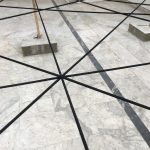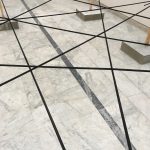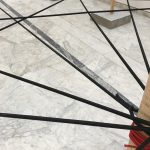The piece blossomed into a representation of the intense fraternization and mutual appreciation among artists and workers versus the absurd pageantry of institutional procedures and conventions. With inherent professional disinterest, the work, in its essence, precludes any attachment to artworld hierarchies, and is naturally at odds with the customary obeisance of the adherent. But noblesse obliged that we politely acquiesce to the required presentation organized by the obsequious disciples of eurocentrism for the grandes dames of the international art establishment, because truly we did not to wish to make our point in any other way. The point was made entirely by the voluntary, loving, open-minded collaboration of strangers, people with no prior connection to each other, women, men, young, old, who came to see, to try, to take part, to help, to give. For the official preview, the dignitaries were obscenely late, and when they finally arrived, they were rushed and impatient. Less than half-way through the work, Madame-la-Directrice-du-Comité-des-Conservateurs-des-Grands-Musées‑d’Europe interrupted us to say that she had already understood, she’d seen enough. I told her, in front of twenty people, that she was rude and disrespectful to all of those who were forced to wait hours for her committee to arrive. I told her that she was free to leave if she wanted but that she should be aware that she had actually not seen and not understood the work. It turns out I had to make my point in words. Although her presence was of no value to the realization of our work, she stayed, out of pinched civility. Unconcerned with its audience, the work unfolded, contracting and expanding ecstatically to its completion. After it ended, I had a brief exchange with another committee member, arguably more receptive, since she was engaging with us at all. She challenged the possibility of a collective without a fixed plural, as in how could I, individual, call myself a collective, as in trying to ascertain the legality of my claim, as if a collective couldn’t be flexible, permutable, spontaneously reconstituted, and yes, amorphous and anarchic. I didn’t even try to explain to her that it is not me singular, but a new entity that forms each time, at my instigation – granted, but that does not constitute a first person singular. Instead I just gave her a sanguine affirmation of my representation of an indefinite plurality.

At the award ceremony (what could more absurd?) the doyenne of European institutional power addressed the ragtag audience of unfamous artists, collected here from all corners of the world, forced into a sham art contest against each other, when all most of us really wanted was to simply share our work. She brazenly lectured the crowd about the spirit of human solidarity, the collaboration between artists and public to produce a creative experience that transcends boundaries while reaffirming our mutual recognition, or something so outrageously disingenuous that the whole audience felt a chill up its collective spine. Was she perhaps just mocking me? (Am I now mocking myself?) Then, she prefaced her introduction of the “winners” with a condescending praise for the women artists among us, acknowledging the important contribution of women in the arts, and supporting the inclusion of women in the highest echelons of art achievement. Then the prizes were announced and one of the four runner-ups was in deed a woman. It was presented as a career achievement award to an older Austrian woman. The other three runner-ups were men of different ages and nationalities. And the Grand Prix went to a young Belgian man. Don’t get me wrong: none of the artists who won were undeserving of a prize. In fact, the Belgian man had a beautiful piece, most deserving of a prize, as did many others. First and foremost, I object to systems of ranking and prizes in general, but especially when it comes to purely creative work, where the criteria for evaluation is so fucking irrelevant. But most of all, I lament the (forced?) dependency of honest and hardworking artists on a system that protects and promotes the most degenerate values of colonial capitalism.
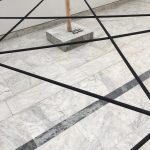
Biennials and residencies have the potential to provide rich encounters among artists, especially when they are inter-disciplinary. Being stranded in an unfamiliar place with a group of creative strangers from different cultures and backgrounds is always electrifying. That is the reason that these opportunities are precious. But to submit to the verdict of juries that most often represent and uphold a market-defined value system, even as they cynically court artists who supposedly question those values, poses a dilemma to artists who genuinely seek to advance alternative possibilities that don’t prioritize institutional inclusion.
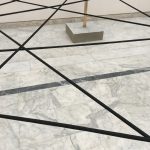
The best we can hope for is to be honest about our ambitions, wherever they lie, and true to our beliefs. For those of us who seek to work in different channels – here I’m trying to find language that doesn’t assume the existence of one center — the traps we face (exacerbated in21st century) are complicated. Does participation in institutional programs make us complicit with a system whose dominance we reject? Is it possible to remain neutral to the context that is hosting us? Is it possible to merely be grateful for any opportunity to work honestly? I do not profess to have an answer. I mull over these questions, and consider each situation as it arises. What I have little patience for is the self-serving fallacy of using the institution to allegedly critique the institution: at best a lost cause, at worst hypocrisy — disavowing while profiting? Even if one were to believe such a strategy credible, and probably many rely on it as a mode of survival, what is the cost? Individual compromise is necessary, and for the most part, inevitable. To operate strictly outside of the prevailing system, as a choice, is arduous, like all forms of asceticism, and ultimately self-defeating, in so many ways, but especially in the way that it preserves the system, even feeds it, by reaffirming its centrality. And in return the center consumes the periphery. How to snake through, across and beyond this concentricity? Perhaps a possible solution beyond in or out could look like radical inclusivity, where a multiplicity of systems could coexist and relate, intersect and exchange, in a way that overturns our current understanding of advantage. I’m fantasizing, but the point is we need to diversify what is valued. We have not to all worship in the same direction.
